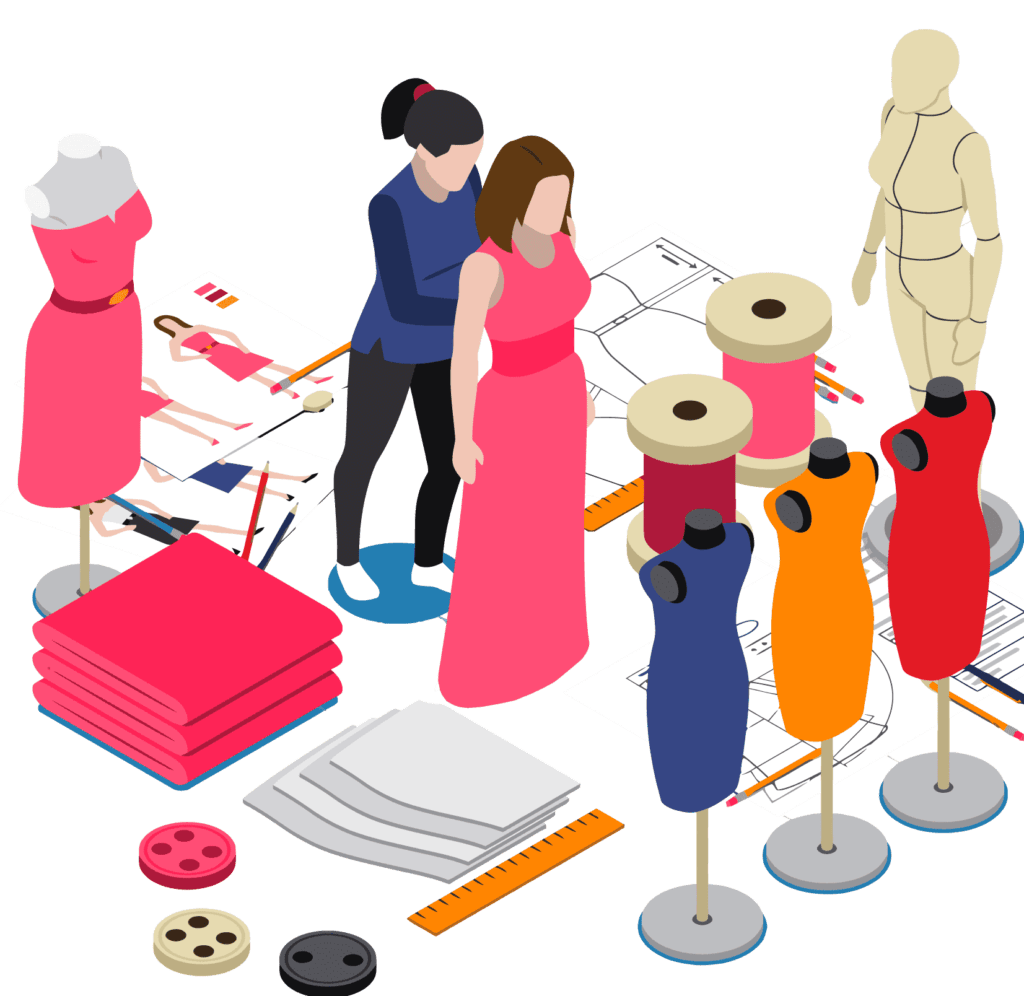Recognizing the Tailoring Process: From Material Choice to Last Suitable for the Ideal Wardrobe
The customizing process is a complicated interaction of art and scientific research, starting with the vital choice of textile option and finishing in the specific changes of last installations. Each fabric type brings unique top qualities that affect not just the aesthetic appeal however additionally the garment's longevity and viability for numerous events. Comprehending the subtleties of tailoring strategies can elevate one's closet to unmatched levels of class. As we check out these components further, one have to think about exactly how even the smallest information can dramatically impact the general outcome of one's personal style.
Importance of Textile Selection
Selecting the appropriate fabric is critical in the tailoring procedure, as it directly influences the comfort, resilience, and general visual of the last garment (tailor perth). The selection of material establishes the foundation for the garment's performance, style, and performance. Various materials have unique residential properties, such as breathability, stretch, and weight, which can considerably impact just how the garment drapes and fits the body
Furthermore, fabric choice affects the garment's durability and ease of care. Top quality textiles can hold up against wear and tear, maintaining their look and structure in time, while lower-quality products might bring about pilling or fading. Furthermore, the ideal textile contributes to the garment's capability to transition throughout events and periods, thereby enhancing convenience.
A tailored item made from an appropriate textile not just showcases craftsmanship yet additionally elevates the user's confidence. Subsequently, comprehending the subtleties of textile selection is paramount for any type of customizing venture. It ensures that the end product not just meets the visual desires of the client but additionally aligns with practical needs, therefore attaining a harmonious equilibrium between kind and feature in the customized closet.
Types of Fabrics and Their Usages
Comprehending the various kinds of textiles offered is important for making informed choices throughout the customizing procedure. Each textile has special characteristics that dictate its viability for certain garments and events.
Cotton, known for its breathability and gentleness, is ideal for casual wear and summer season garments. Its adaptability allows it to be tailored into every little thing from t-shirts to outfits. Woollen, on the other hand, is favored for its warmth and framework, making it an outstanding selection for formal suits and outerwear - tailor perth. Its natural elasticity assists garments maintain form with time.
Silk emanates high-end and is light-weight, making it perfect for eveningwear and fragile shirts; nonetheless, it calls for careful handling due to its frailty. Bed linen, with its textured surface, is a preferred choice for warm environments, providing a airy and crisp feeling, but it wrinkles easily, which might impact the garment's look.
Synthetic materials, such as polyester and nylon, deal toughness and resistance to wrinkles, making them appropriate for everyday wear and energetic garments. Understanding these textile types and their residential properties permits for far better decision-making, ensuring that each tailored piece not only fits well however additionally aligns with the designated objective and occasion.
The Tailoring Techniques Clarified
The art of customizing depends on a selection of techniques that transform material into well-fitted garments. Central to this process is pattern preparing, where a tailor produces templates based on the customer's measurements and preferred style. This initial step guarantees that the garment will fit the user correctly before any kind of reducing takes place.
As soon as patterns are developed, reducing strategies enter into play. Accuracy is extremely important as errors can bring about misfitting garments. Tailors often use various cutting techniques, such as single-layer cutting for elaborate designs and multiple-layer cutting for effectiveness on basic patterns.
Basting is an additional necessary technique, allowing dressmakers to momentarily sew material pieces with each other for an initial installation. This technique offers the chance to analyze the drape and general shape before last stitching.
Seaming strategies, including flat-felled seams and French seams, boost the garment's resilience and visual appeal. Tailors additionally utilize techniques such as interfacing and cushioning to offer framework and form to particular areas, like shoulders and collars.
Lastly, finishing techniques, consisting of hemming and edge completing, ensure the garment's long life while offering a polished look. With each other, these methods create the foundation of reliable tailoring, causing splendid, tailor-made garments.
Fitting Changes and Considerations

Key considerations consist of the shoulder fit, which must neither sag neither limit movement, and the sleeve size, which need to permit comfortable arm movement while keeping a sleek appearance. Additionally, adjustments at the midsection can refine the silhouette, with choices to allow out or take in fabric as required.
The increase of pants is another important variable; it needs to sit pleasantly above the hips without creating pain, permitting for convenience of movement. Hemming lengths for both pants and skirts must show the user's favored style while valuing proportions.

Maintaining Your Tailored Clothes
Correct upkeep of tailored garments is important to protecting their fit and look with time. To More hints ensure longevity, regular cleaning is vital. click this link Constantly follow the care tag instructions, which may advise dry cleansing for delicate fabrics or device cleaning for even more long lasting products. Prevent frequent laundering, as this can use down the textile and alter the garment's form.
Storage is similarly crucial; usage padded hangers for layers and coats to maintain shoulder structure, and store pants folded up neatly or hung to stop creasing. Secure garments from direct sunlight, which can fade shades and damage fibers.
Furthermore, regular examinations for small repairs can stop larger problems. Look for loose buttons, tearing joints, or signs of moth damages, resolving these troubles without delay to keep the garment's integrity.
Finally, take into consideration seasonal turning. Putting on tailored pieces in moderation enables materials to recoup, expanding their life-span. By implementing these maintenance techniques, you can guarantee that your customized garments remain as immaculate as the day you initially wore them, improving your optimal closet for years to come.
Conclusion
The tailoring procedure, including material choice, proficient techniques, and specific fitting adjustments, plays a crucial function in producing garments that enhance both comfort and style. Each stage adds click for more to the general effectiveness of the end product, guaranteeing that clothing not just fits well yet likewise shows individual identity. Understanding the relevance of upkeep extends the life of customized garments, strengthening their worth in a well-curated wardrobe. An extensive technique to customizing finishes in a positive and refined look.
Choosing the right fabric is crucial in the tailoring procedure, as it straight influences the convenience, resilience, and general visual of the final garment. The selection of fabric sets the foundation for the garment's capability, efficiency, and style. Various textiles have special residential properties, such as weight, stretch, and breathability, which can dramatically impact how the garment drapes and fits the body.
The art of tailoring depends on a variety of methods that transform fabric right into well-fitted garments.The customizing process, incorporating material choice, skilled strategies, and exact fitting modifications, plays an important role in developing garments that improve both convenience and style.